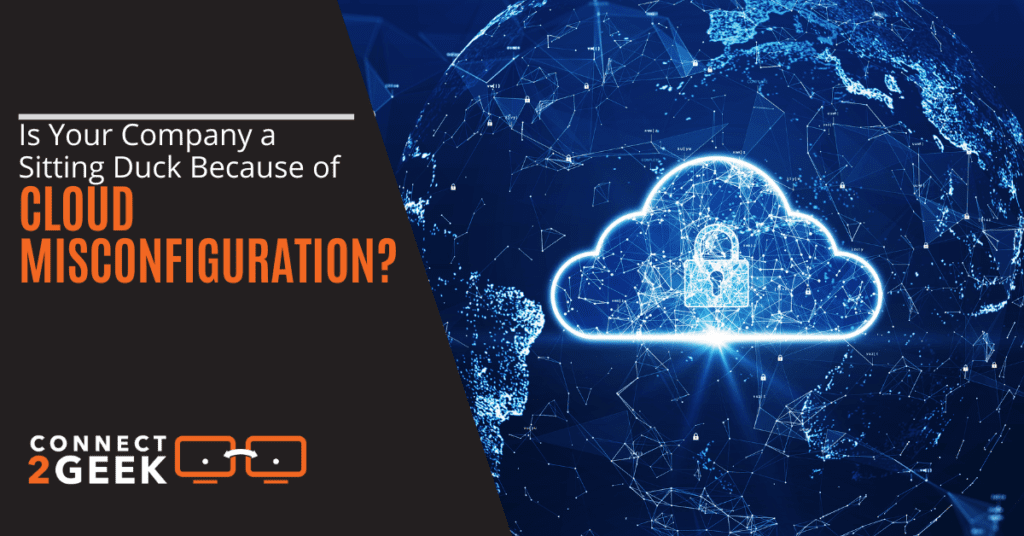
Cloud misconfiguration is one of the most common cloud security threats. It involves any error, loophole, or problem in the cloud that could be a threat to valuable assets and information stored on the cloud.
When cloud misconfigurations exist, vulnerability exploitation occurs, leading to external hacks, security breaches, insider threats, and cyber exposures. Cloud misconfiguration may also result in the release of private information to the public, leading to heavy financial losses or causing damage to the reputation of your company.
As stated above, cloud misconfiguration leads to many issues, making your company a literal ‘sitting duck’ ready to be hunted down. However, the common question is, how do you prevent cloud misconfiguration from occurring in your company? Read on to learn more about cloud misconfiguration, its types, and how to avoid them.
What is Cloud Misconfiguration?
As stated earlier, cloud misconfiguration is any error, loophole, or problem in the cloud that could be a threat to valuable assets and information stored on the cloud. Cloud misconfiguration may lead to publicly exposed assets, access restrictions, permissive storage policies, and external hacks.
It is a costly mistake that you must avoid at all costs, as it is responsible for a lot of security breaches.
Types of cloud misconfiguration
There are many types of cloud misconfiguration that could affect your company. Some of these include:
Misconfiguration of storage access
The exposure of storage assets to external individuals is a major type of cloud misconfiguration. Organizations sometimes unintentionally offer access to “unauthorized” users by mistaking them for users having the right permission. Though they are authorized with the AWS but are not given permission for your business or application, these users might be any customer or user with some credentials.
Cybercriminals may access the storage as a result of this cloud misconfiguration and discover vital data like API keys, passwords, and other credentials.
Under configured or disabled logging and monitoring
Under-configured or disabled logging and monitoring may lead to:
– Not finding suspicious behaviors and security blind spots using these records
– Inability to observe an employee’s improper behavior
– Inability to find any more errors or configuration issues.
Overly permissive access
A cloud environment is excessively permissive when an excessive number of cloud access rights are enabled. Examples of what to do include enabling old protocols on the cloud host, opening ports to the outside world, disclosing critical APIs without the necessary safeguards, and enabling communication between private and public resources.
Cloud subscriptions are referred to in the definition of the list of access controls. When setting programs, giving users too many rights to access controls might provide hackers a way to travel laterally or vertically throughout the system, expanding the attack surface.
Unrestricted outbound and inbound ports
Any inbound port that is accessible over the internet could be unsafe. Security teams should be aware of the complete spectrum of open ports when moving to multi-cloud infrastructure and limit their use to the most critical systems while locking down the less critical ones.
Outbound ports introduce vulnerabilities through lateral movement, data exfiltration, and internal network searches when the system is compromised, adding to the security risks raised by inbound ports. A typical cloud misconfiguration that puts your company at risk for a data breach is granting access to a server through various protocols, such as RDP or SSH, from a network outside your VPN or from a public network.
Default system login information
To simplify the development process, many development teams set default credentials for authentication. For instance, many teams maintain a set of standard credentials for databases, cloud instances, and other services. These default passwords are usually easy to figure out and widely known. And even though it should go without saying, it is advisable not to use these setups or credentials in real-world settings.
Reducing the Risks of Misconfiguration
Monitoring cloud configurations for errors may seem stressful initially, but it helps in the long run. There are a lot of solutions that can be used to reduce the risk of exposure to cloud misconfigurations.
Depending on the type of business you run, there are many tools and measures that your IT team can use. Some of the tools include:
- Documenting everything
- Scanning for vulnerabilities
- Adopting a DevSecOps culture
- Adopt a change management practice
- Simplifying your cloud environments
- Exercising caution when configuring storage.
- Setting up strong login credentials (and inclusion of MFA)
Get an Expert to Help You Deal with Cloud Misconfiguration
Having a more defined, consistent approach to security and incorporating this approach into your development processes and tools will help you resolve numerous cloud misconfigurations. You may significantly limit the effect and recurrence of cloud misconfiguration by integrating development processes into your infrastructure management and emphasizing security.
Contact us at Connect2Geek to eliminate the cloud misconfiguration putting your company’s data at risk.
